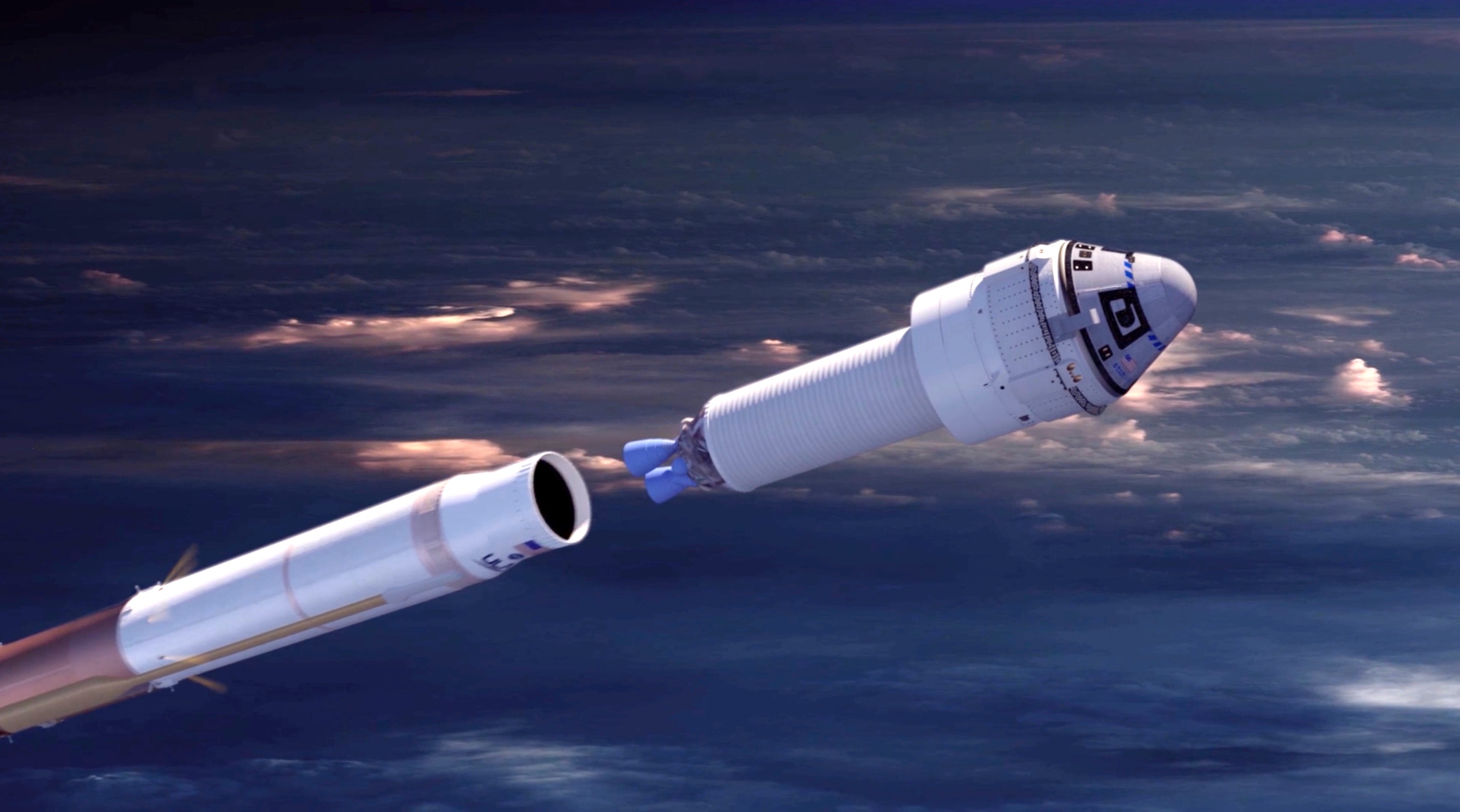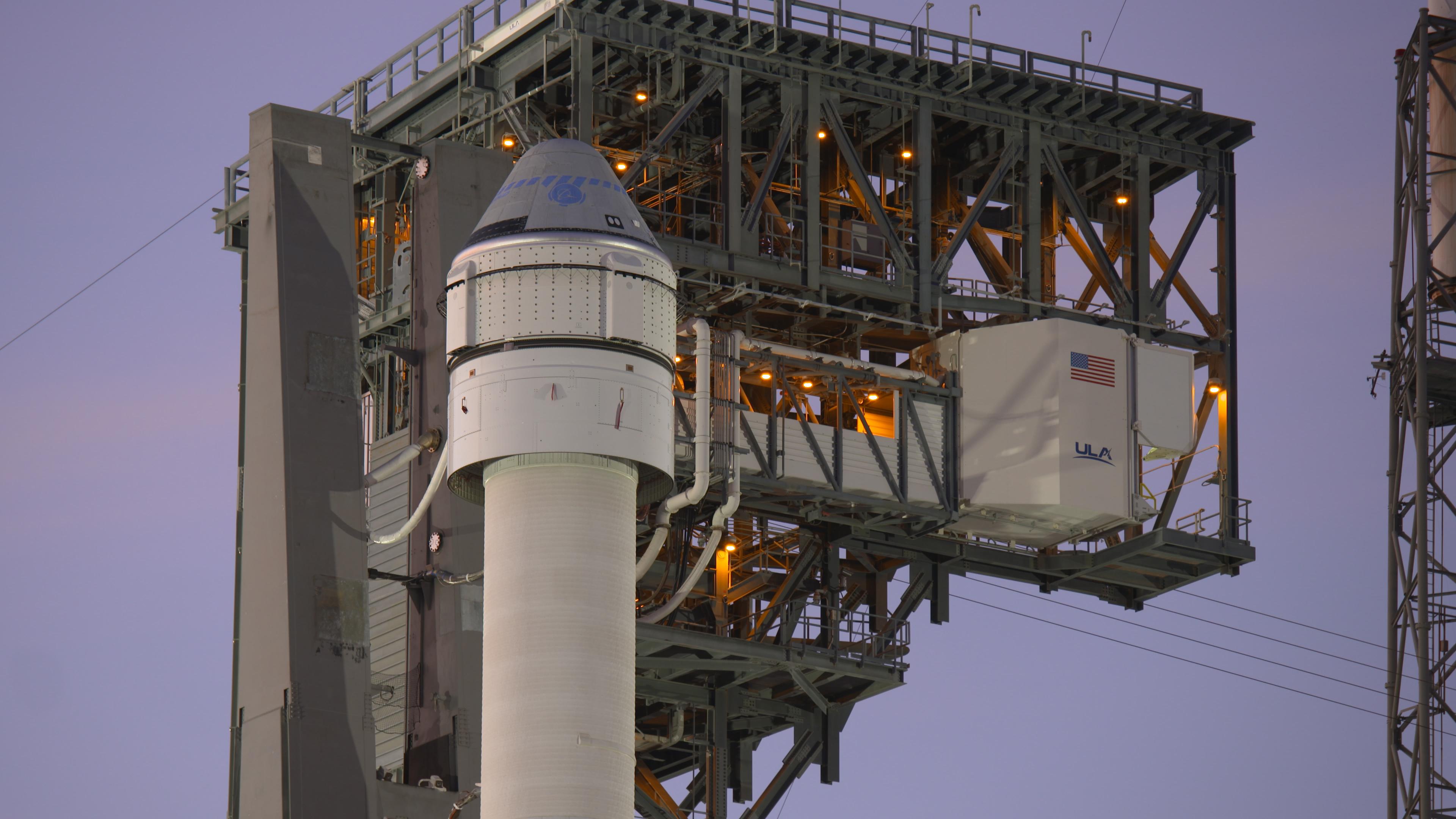
The launch of Boeing's Starliner crew capsule toward the International Space Station (ISS) tomorrow morning (Dec. 20) is a big deal, and the spacecraft's rocket ride will be dressed for the occasion.
Starliner is scheduled to lift off atop a United Launch Alliance (ULA) Atlas V rocket from Florida's Cape Canaveral Air Force Station tomorrow at 6:36 a.m. EST (1136 GMT), kicking off a critical eight-day, uncrewed demonstration mission called Orbital Flight Test (OFT). You can watch the launch live here and on Space.com's homepage, courtesy of NASA TV.
The Atlas V that's flying tomorrow looks slightly different than its brethren. This rocket sports a special "aeroskirt," a 70-inch-long (178 centimeters) structure integrated into the Launch Vehicle Adapter (which links Starliner up with the Atlas V's Centaur upper stage), ULA representatives wrote in a mission update.
Related: Boeing's 1st Starliner Flight Test in Photos
"As we worked through the wind-tunnel testing early in development, we learned that, without the aeroskirt, the shock waves attached near the base of the Centaur and created quite a bit of aero-acoustics noise there, and so the environments that existed were beyond what the hardware was qualified for," ULA chief operating officer John Elbon explained during a prelaunch news conference Tuesday (Dec. 17).
"By adding the aeroskirt, it smoothed that flow, and the waves that come off of the front of the rocket reattach below the Centaur," Elbon added. "In that way, we don't get that acoustics noise, and we're in good shape."

Boeing has been developing Starliner to fly NASA astronauts to and from the ISS. In September 2014, the company was awarded a $4.2 billion contract from NASA's Commercial Crew Program to finish the development work and fly six crewed missions to the orbiting lab. SpaceX received a similar, $2.6 billion deal at the same time, which it will fulfill using its Crew Dragon capsule and Falcon 9 rocket.
Get the Space.com Newsletter
Breaking space news, the latest updates on rocket launches, skywatching events and more!
OFT will mark Starliner's first trip to orbit. If all goes according to plan, Starliner will remain aloft for more than a week, coming back down to Earth for a parachute-aided touchdown on Dec. 28.
"This test flight will give us valuable data about Starliner’s performance in the actual environment through each phase of flight and demonstrate its capability to transport crew to the space station and bring them home safely," Trip Healey, NASA’s mission manager for OFT, said in a recent statement. "Being on the cusp of this huge moment in history is really exciting."
SpaceX flew its version of OFT in March, a six-day mission called Demo-1, and is now preparing for an "in-flight abort" test next month. The IFA will demonstrate Crew Dragon's ability to get astronauts out of harm's way in the event of a launch emergency.
If Boeing and SpaceX ace these coming milestones, both companies will be ready to fly crewed demonstration missions to the ISS, likely sometime next year. Operational, contracted flights would then follow. (Starliner will not perform an in-flight abort test before flying crew.)
- Atlas V: Reliable, Flexible Rocket
- Boeing's CST-100 Starliner Space Capsule (Infographic)
- In Photos: Boeing's Starliner Pad Abort Test Launch
Mike Wall's book about the search for alien life, "Out There" (Grand Central Publishing, 2018; illustrated by Karl Tate), is out now. Follow him on Twitter @michaeldwall. Follow us on Twitter @Spacedotcom or Facebook.

Join our Space Forums to keep talking space on the latest missions, night sky and more! And if you have a news tip, correction or comment, let us know at: community@space.com.

Michael Wall is a Senior Space Writer with Space.com and joined the team in 2010. He primarily covers exoplanets, spaceflight and military space, but has been known to dabble in the space art beat. His book about the search for alien life, "Out There," was published on Nov. 13, 2018. Before becoming a science writer, Michael worked as a herpetologist and wildlife biologist. He has a Ph.D. in evolutionary biology from the University of Sydney, Australia, a bachelor's degree from the University of Arizona, and a graduate certificate in science writing from the University of California, Santa Cruz. To find out what his latest project is, you can follow Michael on Twitter.








